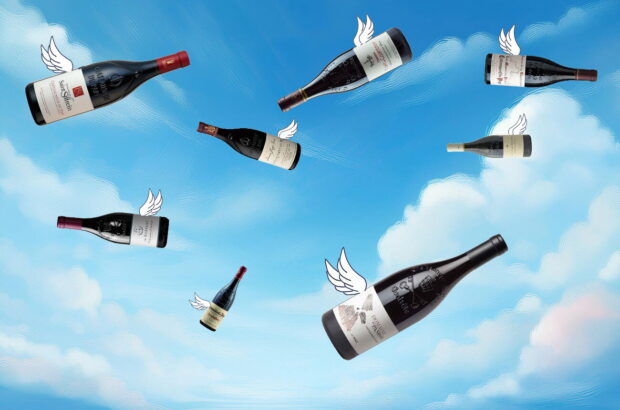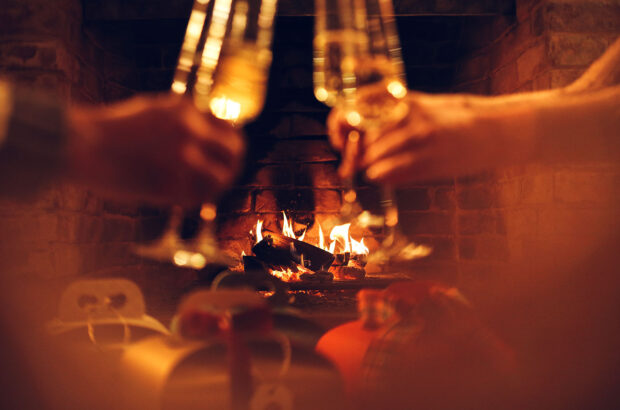The gentle hills of Tuscany's coastal plain form one of Italy's most exciting new wine regions, Maremma. STEPHEN BROOK is very impressed by the wines that are emerging.
FOR some time, major producers such as Gaja, Antinori, Mazzei, Rocca della Macie, Zonin, Frescobaldi and Allegrini have been buying up promising acreage here in the Maremma and planting vines. Moreover, the first releases of their wines have been highly promising. Two years ago I reported on the splendours coming from estates such as Tua Rita, Terriccio, Le Macchiole and Grattamacco. On my return, I found many others capitalising on the big players’ success.
https://www.decanter.com/learn/wine-legend-gaja-barbaresco-2001-369671/
The Maremma includes most of the coastal plains and foothills from Pisa south to Grosseto. The most fashionable area is Bolgheri, but there’s little land left for planting and interest has spread to Montescudaio, Bibbona, Piombino and Scansano. Blink and there’s a new winery opening its doors.
The initial expansion was a result of the noble Chianti region families looking longingly to the balmy coast, where the climate was far more predictable than that of the Chianti zone and seemed ideal for international varieties such as Cabernet, Merlot and Syrah. However, the best wines were not only made by the major Italian investors with dazzling modern wineries, such as Gaja at Ca’ Marcanda and Petra near San Lorenzo. Small farmers, such as Virgilio Besti of Tua Rita and Nico Rossi of Gualdo del Re in Val di Cornia, were also swift to realise that with low yields and modernised cellars they, too, could make exceptional wines.
In the heart of Bolgheri I called on Giovanni Chiappini. His 5ha (hectares) of vineyards form part of a traditional little estate and vie for space with olive trees and corn fields. They aren’t all in production yet, but Chiappini knows there’s more money in wine than corn, so he’s trying to expand his vineyards. He has two wines: an unoaked Sangiovese-dominated red called Felciaino and Guado de’ Gemoli, a Cabernet-dominated blend aged 13 months in mostly new barriques. The property is very new as a commercial wine estate, so I tasted mostly from barrel, but it was clear that quality would be high: Felciaino will mop up the existing Sangiovese vines while, as production expands, Guado will win acclaim and fetch high prices.
As my visits continued, I realised that whether you are an investor or a local farmer in Maremma, you can’t go wrong because everything ripens here. As everywhere, yields play a crucial role, but nonetheless it would take a high degree of greed or incompetence to produce poor wine from the Tuscan coast.
Wherever I went, I found small estates producing delicious wines. Tiziana Socci looks after the modest San Michele winery near San Vincenzo. She is advised by the acclaimed oenologist Luca d’Attoma, and it may be on his recommendation that Socci chose special rootstocks to reduce vigour, grafting some existing Sangiovese over to the sexier Syrah. The results are certainly fine: a pure and robust Syrah (Alaterno) and a blend of Sangiovese, Cabernet and Syrah (Allodio).
Just up the coast, Enrico Santini planted his organic vineyards even more recently and they are just coming on stream. The well-established producer Michele Satta encouraged him to set up on his own a few years ago and he chose his location carefully, with excellent vineyards close to Antinori’s. The white is rather dull, but the basic red blend, Poggio al Moro, with a brief spell in new oak, is delicious – rich and supple, with no astringency. The top wine, Monte Pergoli, is a Bordeaux blend plumped up with 20% Syrah and aged in 50% new oak. Despite the infancy of the vines, the wine is concentrated and powerful, with rich, ripe tannins.
But even in this land where almost everything ripens with ease, there are extremes. Sorbaiano is an estate in the Montescudaio zone and its lofty vineyards lie some distance inland. Pian del Conte is pure Sangiovese, aged half in French oak, half in tanks, and Rosso delle Miniere is a barrique-aged blend of Sangiovese, Cabernet Sauvignon and a little Malvasia Nera. With both these wines I find the oakiness raw and the acidity aggressive.
At Poggio Gagliardo, a Montescudaio estate much closer to the coast, the acidity is less forceful, but the large range of wines lacks consistency. I liked the barrique-aged Chardonnay, Vignalontana, and the intense and oaky Sangiovese called Rovo. Back in Bolgheri I encountered another extreme. Caccia al Piano was bought in 1997 by professor of medicine Mariano Franzini. His consultants advised no-holds-barred viticulture. The density is 10,000 vines per hectare (ha), and pruning and green-harvesting keep yields very low. The vines are young and generate around 24 bunches – 20 get the chop, giving an approximate yield of 20hl/ha.
I tasted both red wines from the 2000 vintage. Ruit Hora is 80% Cabernet, 20% Merlot; Levia Gravia is the reverse and spends 18 months in barrique. To my taste they were overripe, almost jammy, and so concentrated as to be fatiguing. These are show wines, but are they drinkable? They struck me as forced and flashy. There is no need to put young vines into this kind of straitjacket.
This is the danger of going all-out for international-style wines. Levia Grava is poaching on Masseto territory, aiming for the same market as Ornellaia’s renowned Merlot. Of course, the Maremma is ideal for this style of wine, but sometimes it’s gratifying to find wines with a more distinctively Italian stamp.
Down near Piombino, where the ferries ply the straits to Elba, Pierluigi Bonti of the Sangiusto estate cultivates vineyards on slopes behind the town. The enthusiastic Bonti has great faith not only in Sangiovese, but in Montepulciano, which appears in both his red blends: Sangiusto is aged 12 months in barriques, while Rossi degli Appiani has a touch more Montepulciano and is aged in new oak. Both are delicious, with a plummy, chocolatey character that never seems overwhelming because the opulence is balanced by firm tannins.
Filippo Pellegrini has enthusiasm, too, but his takes a more manic form. From a long-established local family, Pellegrini has caught the wine bug badly and has been planting what he believes are exceptional vineyards all over the region.
At present he only makes one wine, Lagone, an IGT blend of Merlot, Cabernet and old-vine Sangiovese. It is fermented with natural yeasts and aged 12 months in new oak. The 1998 was good, but the 2000 is sensational and, unlike most Maremma wines, the price is reasonable. The Pellegrini estate is called Aia Vecchia, Tibor Gàl (ex-Ornellaia) is the consultant oenologist and the property is certainly one to watch.
Visit decanter.com’s Learning Route section for more information on Tuscan wines.
HOT PROPERTIES IN MAREMMA
There is too much going on in the Maremma to describe in full but here are some of the highlights.
Ambrosini: from 4ha in Suvereto, Ambrosini produces a rich, vigorous, spicy Sangiovese-Merlot blend called Subertum and a dense burly Montepulciano IGT called ‘iflesso Antico
Jacopo Banti: located near Campiglia Marittima, Banti produces a wide range of relatively inexpensive wines, with the best being the Cabernet-dominated Peccato, which emphasises spicy cassis fruit rather than extraction and power
Ca’ Marcanda: from the Gaja estate in Bolgheri comes Magari, a sleek Bordeaux blend, beautifully crafted but perhaps lacking in personality
Gualdo del Re: a new broom in the shape of oenologist Barbara Tamburini has swept through the cellar, and vintages since 2000 are greatly improved – the best wines are Federico I (Cabernet) and Rennero (Merlot)
Guidalberto: Nicolo Incisa of Sassicaia has a hand in what – because the grapes come from an adjoining property – is loosely described as the estate’s ‘second wine’, a good but overpriced Bordeaux blend with a dash of Sangiovese
Petra: it’s early days for this lavish new estate, which is under the same ownership as Bellavista in Franciacorta, but cask samples show great promise
La Regola: up in the hills by Riparbella, Luca Nuti makes La Regola, a wonderful lush blend of Sangiovese and Bordeaux varieties, but the bargain is the second wine, Vallino delle Conche, which is almost as good
Russo Suvereto: a smell of dog in the farmhouse didn’t enhance the tasting experience here, but the two top wines are impressive: the oaky, Sangiovese-dominated Barbicone and the Bordeaux blend Sasso Bucato
San Luigi Piombino: Fidenzio is the top wine here, blending Cabernet Sauvignon and Cabernet Franc for a ripe, supple, yet minty and peppery result
Villa Caprareccia Bibbona: this estate’s Merlot/Cabernet Mastremilio is rich and zesty
WHAT’S WHERE
Bolgheri: a rapidly expanding DOC, created in 1994, which is superb for Bordeaux-style wines, as Sassicaia, Ornellaia and others have demonstrated – but having recently risen to 800ha, suitable vineyard land is running out
Montescudaio: north of Bolgheri, this DOC was created in 1977 and Poggio Gagliardo, Sorbaiano and La Regola are the leading estates
Val di Cornia: focused around the town of Suvereto, this area is proving exceptional both for Sangiovese and Bordeaux varieties, although many wines are sold as IGT to get around the DOC regulations
RECOMMENDED WINES
SAN MICHELE ALATERNO 2001 *** N/A UK
SANGIUSTO 2000 **** N/A UK (+39 0565 41198)
SANTINI POGGIO AL MORO 2001 **** £11.75; C&B
SANTINI MONTE PERGOLI 2000 **** £28.96; C&B
SORBAIANO LUCESTRAIA 2000 *** N/A UK (+39 0588 30243)
POGGIO GAGLIARDO ROVO 1999 *** N/A UK (+39 0586 630775)
AIA VECCHIA LAGONE 2000 **** N/A UK
BANTI PECCATO 2000 ** N/A UK (+39 0565 838802)
CA’ MARCANDA MAGARI 2000 **** £21.70; Arm (only available by case)
GUALDO DEL RE RENNERO 2000 **** N/A UK
LA REGOLA 2000 **** N/A UK (+39 0586 696991)
RUSSO BARBICONE 2000 *** N/A UK
SAN LUIGI FIDENZIO 1999 **** N/A UK
Maremma classics
SAN GUIDO SASSICAIA 1999 ***** POA; Arm
ORNELLAIA MASSETO 1998 ***** POA; C&B
TERRICCIO LUPICAIA 2000 ***** £55; L&S (available spring 2003)
TUA RITA GIUSTRO DI NOTRI 2000 **** N/A UK
LE MACCHIOLE MESSORIO 1998 ***** £85; L&S (only on allocation)
Written by Stephen Brook







